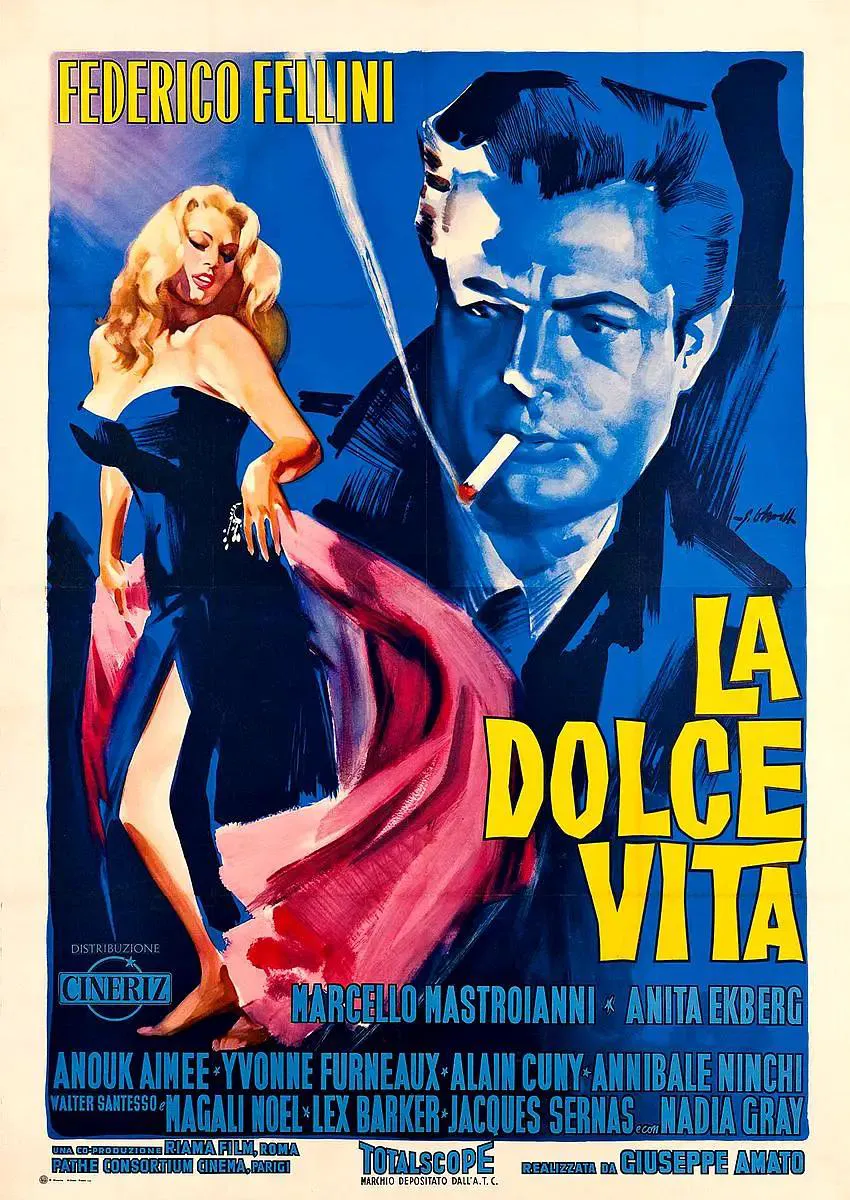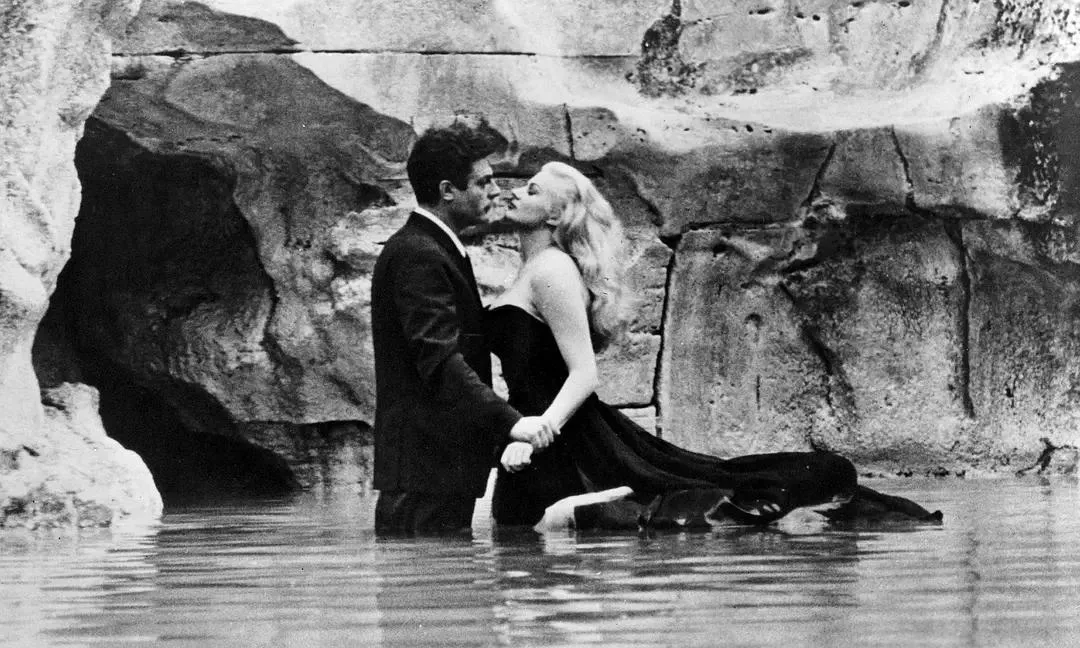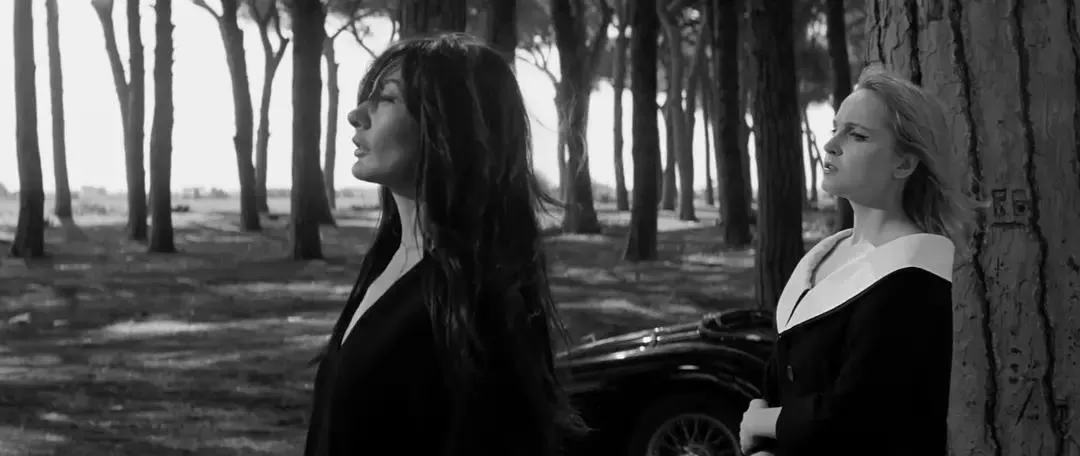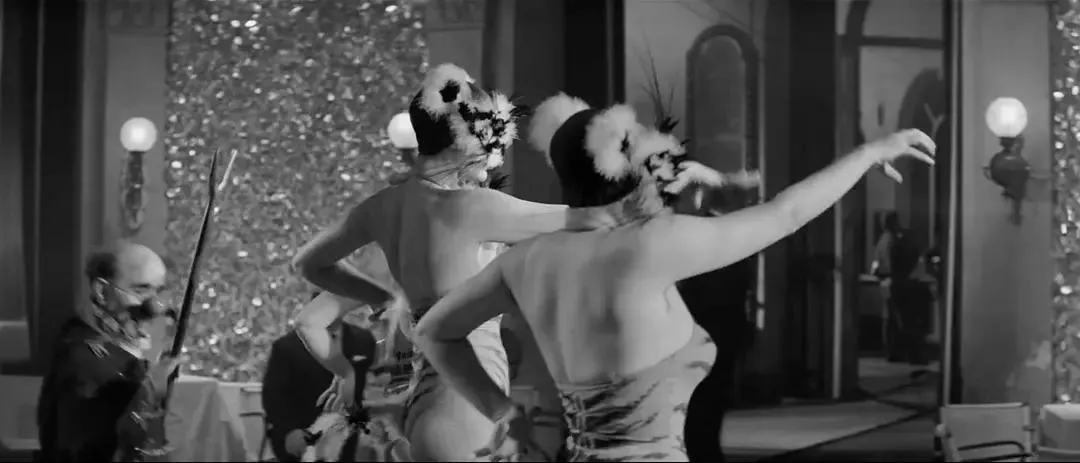Decoding “La Dolce Vita”: A Journey Through Excess and Existentialism
Introduction
“La Dolce Vita” (The Sweet Life), released in 1960, stands as a cinematic masterpiece directed by the iconic Federico Fellini. More than just a film, it’s a cultural touchstone, a defining work of both Fellini’s career and the Italian neorealism movement. Featuring a stellar cast including Marcello Mastroianni, Anita Ekberg, and Anouk Aimée, the film weaves a compelling narrative of decadence and disillusionment.
Fellini, a leading figure in Italian neorealism, distinguished himself through his unique artistic vision. He masterfully blended vivid imagery with profound emotional depth, blurring the lines between reality and fantasy to explore the complexities of human nature and societal issues.

Behind the scenes, cinematographer Otello Martelli played a crucial role, lending the film its distinctive visual aesthetic. His skillful camerawork captured both the modern and classical beauty of Rome. The film’s evocative score, composed by Nino Rota, further enhances the viewing experience.
“La Dolce Vita” garnered significant acclaim, winning the Academy Award for Best Original Screenplay and the Palme d’Or at the Cannes Film Festival. Its success cemented Fellini’s status as a globally influential director, leaving an indelible mark on cinema and culture.

The Genesis of “La Dolce Vita”
The film’s origins can be traced back to the vibrant Italian film scene of the 1960s. The neorealist movement was at its peak, advocating for a departure from romanticized portrayals of life in favor of more authentic and relatable depictions of society.
Fellini, already celebrated for his previous works, sought to delve deeper into the anxieties, moral decay, and sense of alienation prevalent in modern society. Drawing inspiration from his own observations and experiences, he set the film in Rome, capturing the lives of individuals from various social strata and presenting a series of absurd and symbolic scenes.

Upon its release in Italy in April 1960, “La Dolce Vita” was met with both acclaim and controversy. Audiences lauded its complexity, symbolism, and incisive commentary on contemporary society. The film also enjoyed international success, solidifying its position as a landmark cinematic achievement.
Commercially, the film was a triumph, becoming one of Italy’s highest-grossing films of the year. It also received numerous awards and nominations, cementing Fellini’s reputation as a visionary director and establishing “La Dolce Vita” as a timeless classic in Italian cinema.

Characters and Narrative
Marcello Rubini, the protagonist, is a journalist navigating the glamorous yet superficial world of Rome. Driven by ambition and a thirst for fame, he indulges in the city’s pleasures and temptations. As the story unfolds, Marcello confronts his own emptiness and seeks genuine meaning and happiness. His character embodies the universal struggle of individuals lost in the modern world.
Madeleine, Marcello’s lover, is a wealthy and alluring woman known for her beauty and social status. She represents vanity and sensuality, exerting a significant influence on Marcello. However, she also reveals her inner loneliness and longing for true love, adding depth and complexity to her character.
Emma, Marcello’s former wife, embodies his past ideals and a simpler life. She is traditional, innocent, and kind, contrasting sharply with the superficial world Marcello now inhabits. Her character highlights the pursuit of genuine values and emotions, providing a stark contrast to the other characters.
These characters evolve throughout the film, grappling with inner conflicts and transformations under societal pressures. Their portrayals invite viewers to contemplate the impact of modern society on the individual and the choices one faces in the pursuit of power, pleasure, and true love. Through these characters, the film explores the complexities of human nature and the search for meaning, prompting reflection on the conflict between reality and ideals, vanity and authenticity.
Visual Storytelling: Cinematography and Technique
Fellini masterfully employs recurring motifs of reflections and mirrors to create a dreamlike and ambiguous atmosphere, reflecting the characters’ inner emotions and thoughts.
His use of fluid, dynamic camera movements captures the changing scenes and characters, enhancing the drama and visual impact of the narrative.
Fellini skillfully utilizes varying focal lengths and compositions. He often employs wide-angle lenses to capture expansive environments while using close-ups and detailed shots to emphasize the characters’ emotions.
“La Dolce Vita” is filmed in black and white, creating a unique visual atmosphere through contrasting tones and textures. This stylistic choice underscores the film’s realism and emotional depth.
Through these techniques, Fellini crafts a distinctive cinematic language, immersing viewers in the world of the story and its characters. These artistic choices not only highlight the film’s creativity but also imbue it with a unique emotional and visual experience.
Themes and Significance
The film offers a glimpse into the underbelly of Rome and its social issues through the eyes of a news photographer. By depicting poverty, corruption, and social injustice, the film hints at the fragility of social structures and moral decay, prompting reflection on inequality and injustice.
It captures the diversity and unique cultural landscape of Rome. Its observations of Italian culture and society, as well as its portrayal of media, entertainment, and celebrity culture, reflect the values and aesthetics of the time. By showcasing the lives and experiences of different characters, the film conveys universal themes about humanity, life, and love.
Through Marcello’s personal journey and inner conflicts, the film explores the meaning of human existence and the pursuit of personal freedom. As Marcello seeks success and pleasure, he gradually recognizes his inner emptiness and loneliness, leading to profound reflections on the meaning of life. This personal exploration resonates with viewers and encourages them to consider their own life choices and values.
In summary, “La Dolce Vita” reveals many social, cultural, and personal challenges. It reminds us to pay attention to social issues, cherish cultural diversity, and deeply reflect on our inner world and the true meaning of life. This significance and inspiration leave a lasting impression on viewers, influencing their thoughts and actions.
Artistic Vision and Style
Analyzing the director’s personal style and aesthetic viewpoints, including his unique handling of camera work, composition, editing techniques, and music usage. By deeply studying the director’s artistic expression, we can reveal his use and innovation of film language.
Exploring the work of the cinematographer and the collaboration between the director and cinematographer. Analyzing the effects of photography techniques, light and shadow usage, and color schemes on the expression of plot and emotional atmosphere. Studying the aesthetic conception of film images and the use of visual elements, such as camera angles, camera movements, and depth of field.
By studying the film’s artistic conception and directorial techniques, we can deeply understand the director’s creative intentions and artistic pursuits, as well as how to express and convey the themes and emotions of the story through film language. This helps to reveal the film’s artistic charm, explore the director’s creative style, and understand the artistic and aesthetic impact on the audience.
Conclusion
“La Dolce Vita” received widespread acclaim and recognition upon its release, regarded as a film of significant importance. It not only garnered attention from audiences and critics at the time but has also been considered one of the classics in film history in later years. Its influence continues to this day, profoundly impacting subsequent film productions and the creations of directors.
Overall, “La Dolce Vita” provides viewers with a profound artistic experience through its unique artistic expression and intellectual exploration. It holds an important position in film history, becoming a work of far-reaching influence and immortal artistic value.